回文链表-leetcode
题目描述
给你一个单链表的头节点 head ,请你判断该链表是否为回文链表。如果是,返回 true ;否则,返回 false 。
示例 1:

输入:head = [1,2,2,1]
输出:true
示例 2:

输入:head = [1,2]
输出:false
提示:
- 链表中节点数目在范围
[1, 105]内 0 <= Node.val <= 9
进阶:你能否用 O(n) 时间复杂度和 O(1) 空间复杂度解决此题?
解法一
思路:
找到链表中间节点,将链表后半部分进行反向,然后在比较前后部分值是否相等。
/**
* Definition for singly-linked list.
* public class ListNode {
* int val;
* ListNode next;
* ListNode() {}
* ListNode(int val) { this.val = val; }
* ListNode(int val, ListNode next) { this.val = val; this.next = next; }
* }
*/
class Solution {
public boolean isPalindrome(ListNode head) {
if(head.next==null)return true;
ListNode p = head,q;
int listNodeLen=0;
while (p != null) {
listNodeLen++;
p = p.next;
}
p=head;
for (int i = 0; i < listNodeLen/2-1; i++) {
p = p.next;
}
q=p.next;
p.next = null;
//长度为奇数
if(listNodeLen%2!=0)q=q.next;
ListNode head1=reverseList(q);
while(head!=null){
if(head.val != head1.val) return false;
head=head.next;
head1=head1.next;
}
return true;
}
public ListNode reverseList(ListNode head) {
if(head == null || head.next == null) return head;
ListNode p,q,r;
p = head;q=head.next;r=head.next.next;
while(true){
if(p==head)p.next=null;
q.next=p;
p=q;
q=r;
if(q==null) break;
r=r.next;
}
return p;
}
}
解法二
思路:
来自官方解答。
之前是首先遍历完链表求得链表长度再来寻找中间节点,现在使用快慢指针。慢指针一次走一步,快指针一次走两步,快慢指针同时出发。当快指针移动到链表的末尾时,慢指针恰好到链表的中间。通过慢指针将链表分为两部分。
代码:
class Solution {
public boolean isPalindrome(ListNode head) {
if (head == null) {
return true;
}
// 找到前半部分链表的尾节点并反转后半部分链表
ListNode firstHalfEnd = endOfFirstHalf(head);
ListNode secondHalfStart = reverseList(firstHalfEnd.next);
// 判断是否回文
ListNode p1 = head;
ListNode p2 = secondHalfStart;
boolean result = true;
while (result && p2 != null) {
if (p1.val != p2.val) {
result = false;
}
p1 = p1.next;
p2 = p2.next;
}
// 还原链表并返回结果
firstHalfEnd.next = reverseList(secondHalfStart);
return result;
}
private ListNode reverseList(ListNode head) {
ListNode prev = null;
ListNode curr = head;
while (curr != null) {
ListNode nextTemp = curr.next;
curr.next = prev;
prev = curr;
curr = nextTemp;
}
return prev;
}
private ListNode endOfFirstHalf(ListNode head) {
ListNode fast = head;
ListNode slow = head;
while (fast.next != null && fast.next.next != null) {
fast = fast.next.next;
slow = slow.next;
}
return slow;
}
}
解法三
采用递归的方法。递归会从尾向头返回,再定义一个前指针,判断前后指针是否相等。

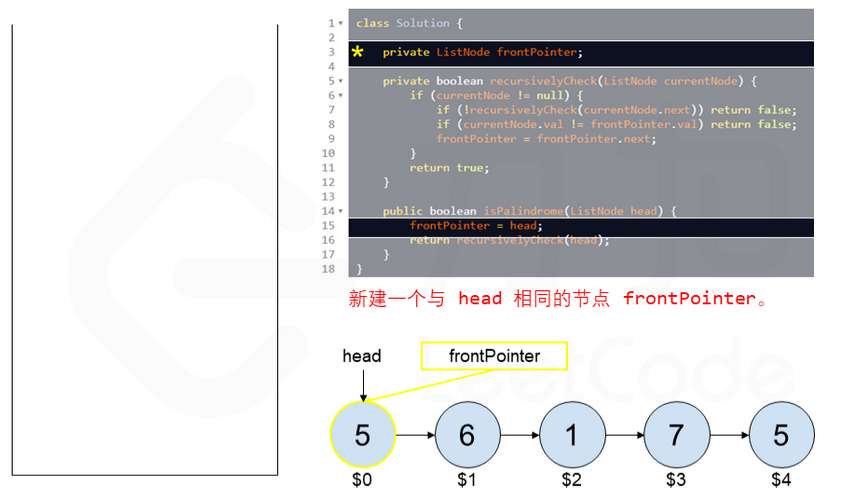
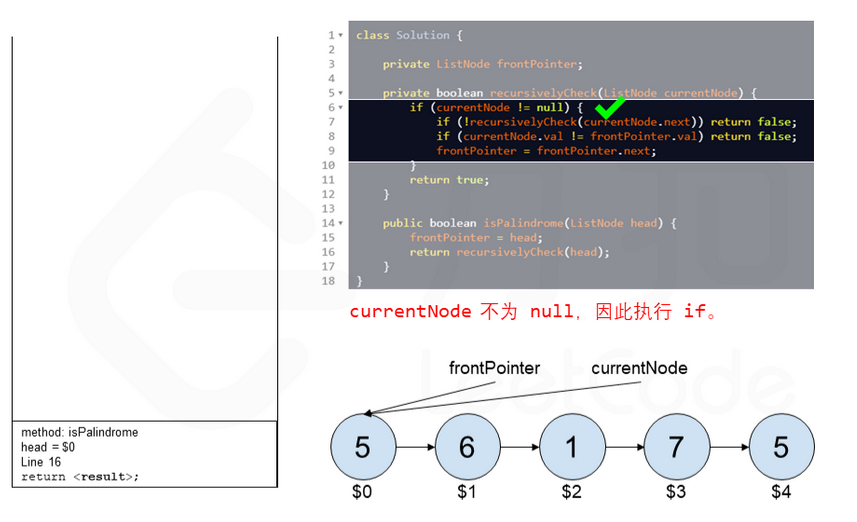
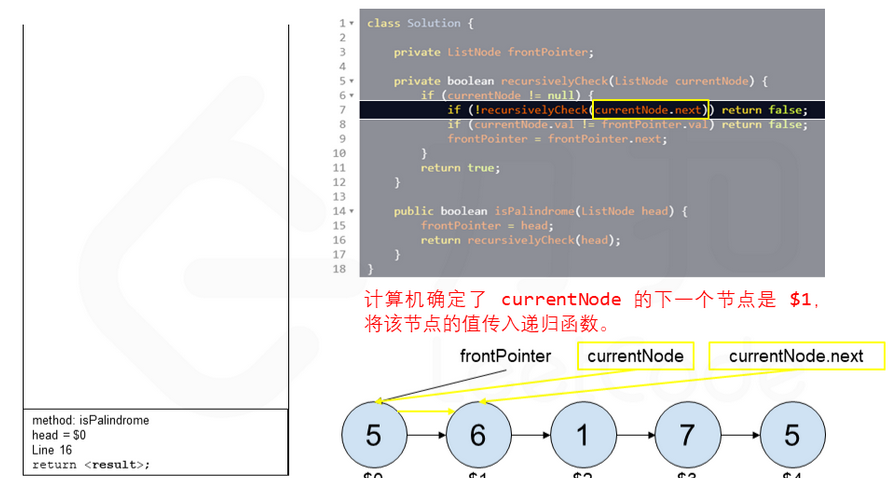
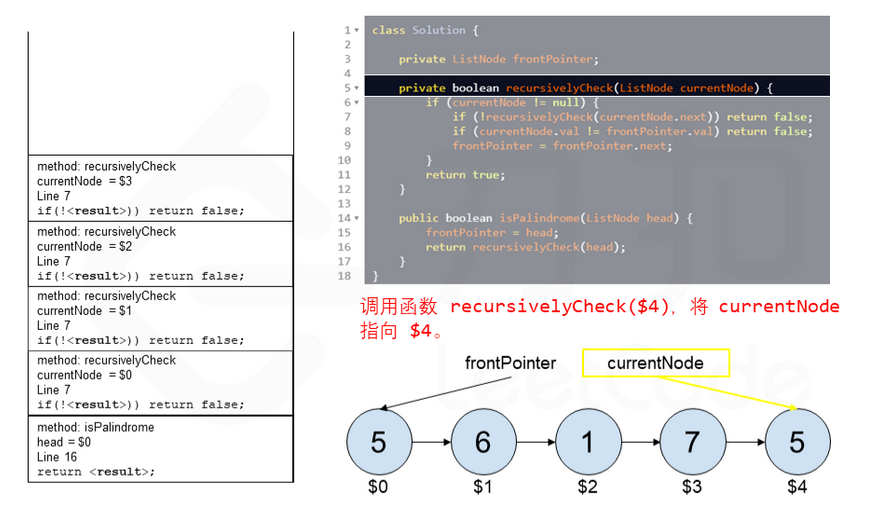
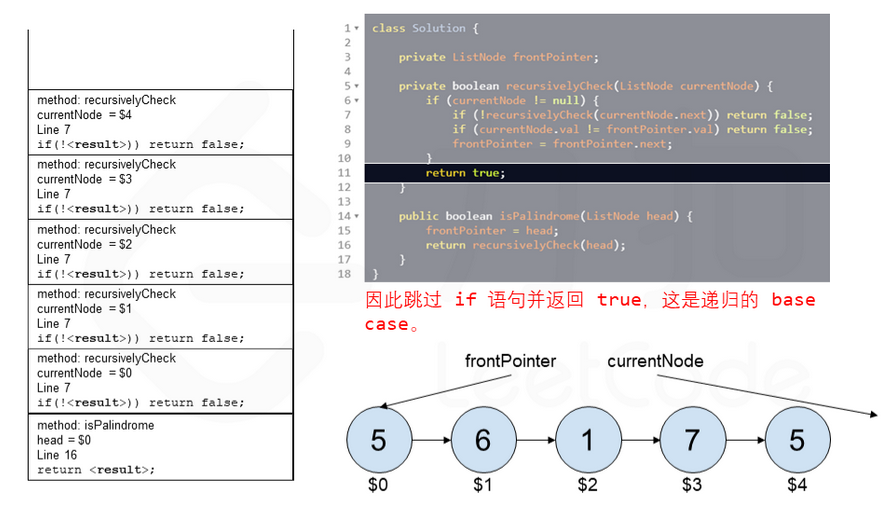
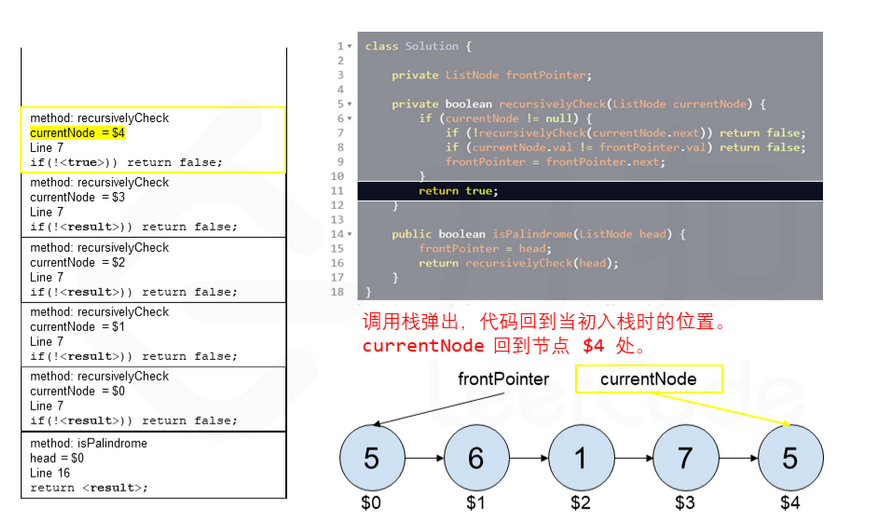
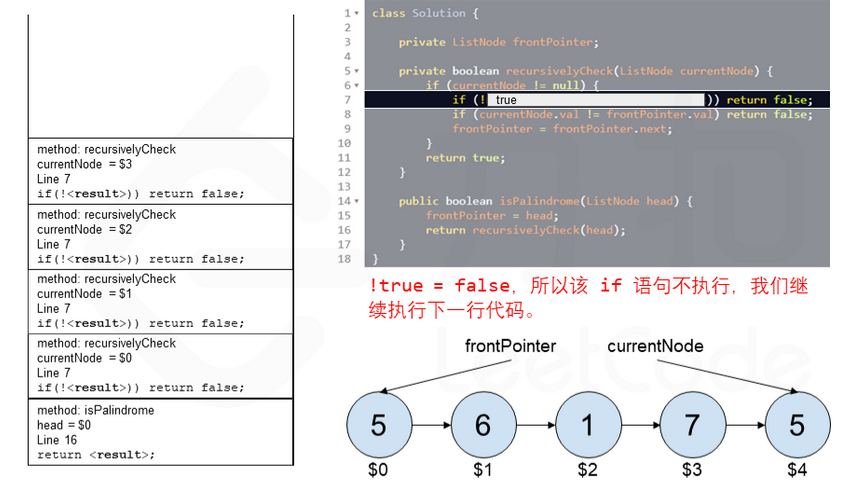

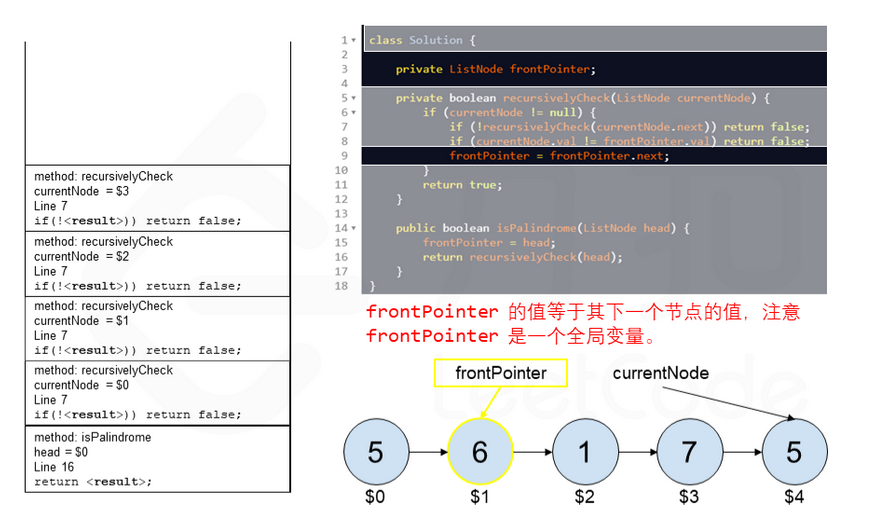
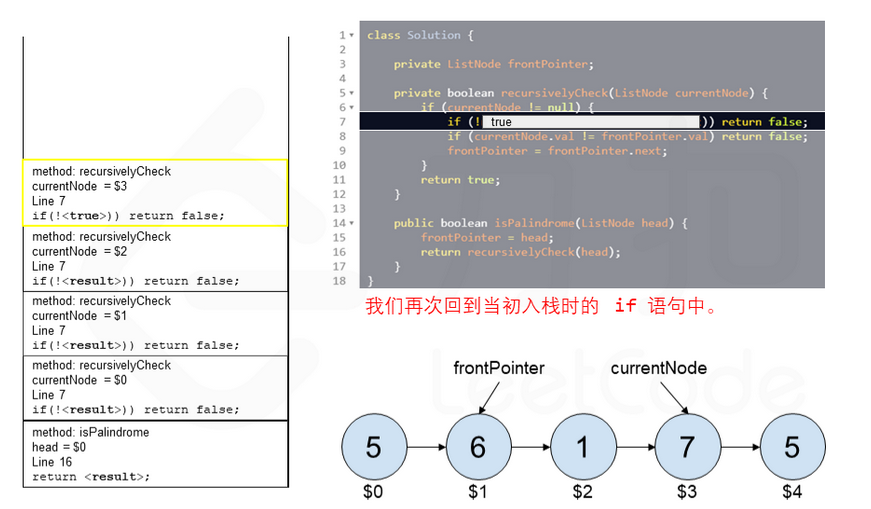
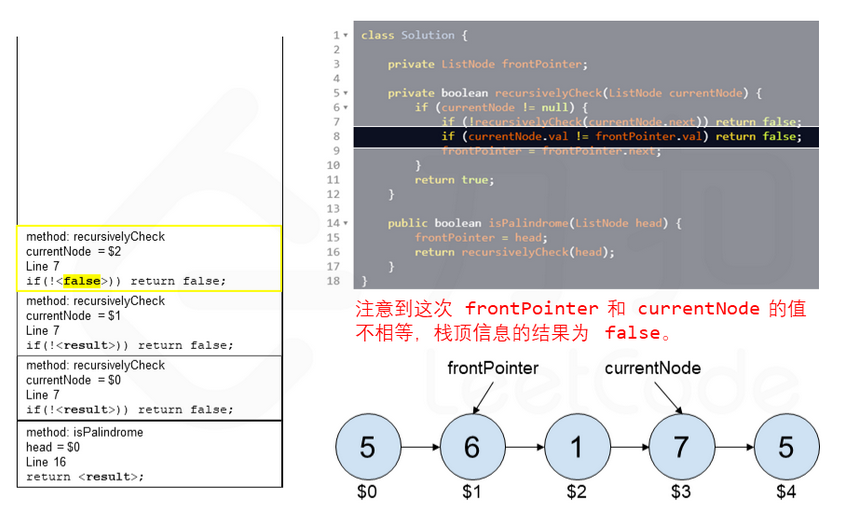
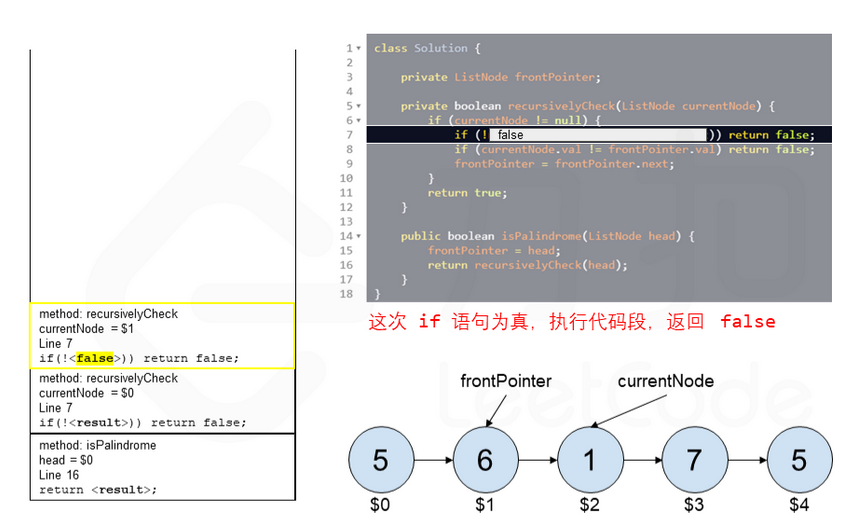
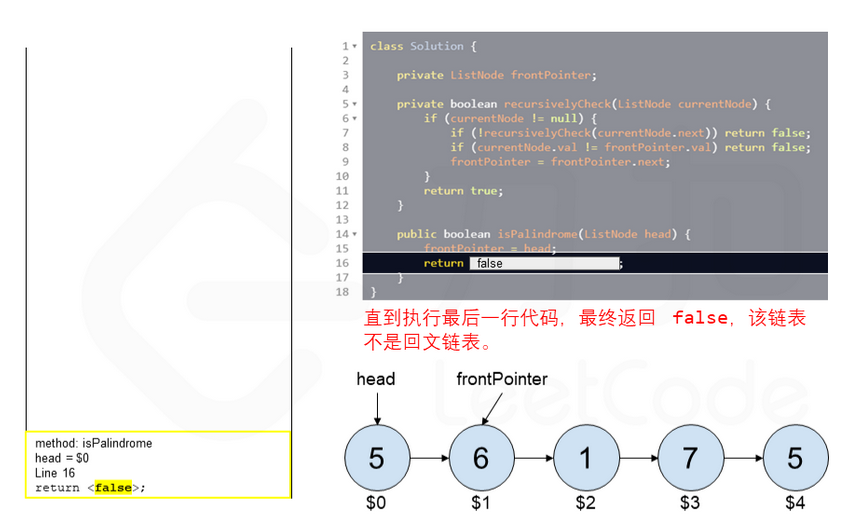
代码:
class Solution {
private ListNode frontPointer;
private boolean recursivelyCheck(ListNode currentNode) {
if (currentNode != null) {
if (!recursivelyCheck(currentNode.next)) {
return false;
}
if (currentNode.val != frontPointer.val) {
return false;
}
frontPointer = frontPointer.next;
}
return true;
}
public boolean isPalindrome(ListNode head) {
frontPointer = head;
return recursivelyCheck(head);
}
}



 浙公网安备 33010602011771号
浙公网安备 33010602011771号